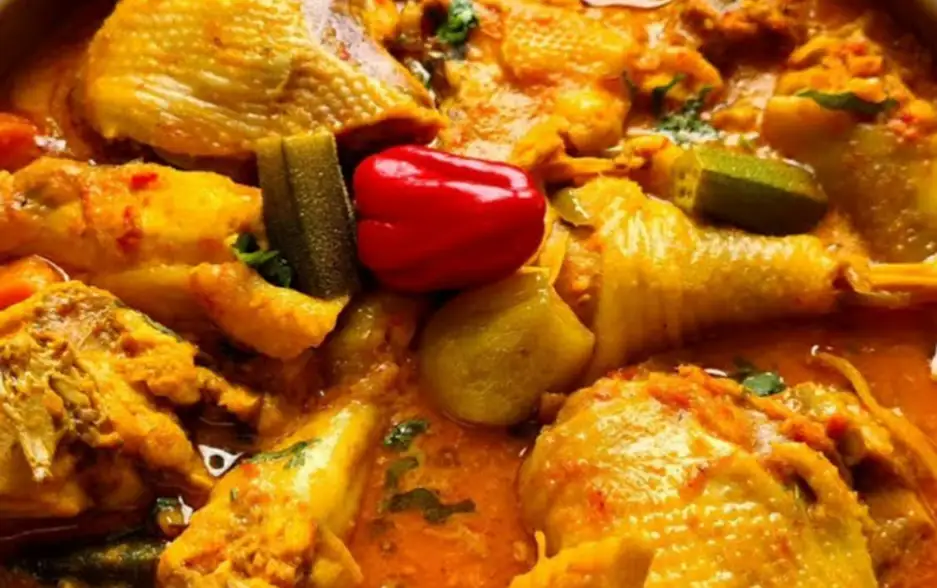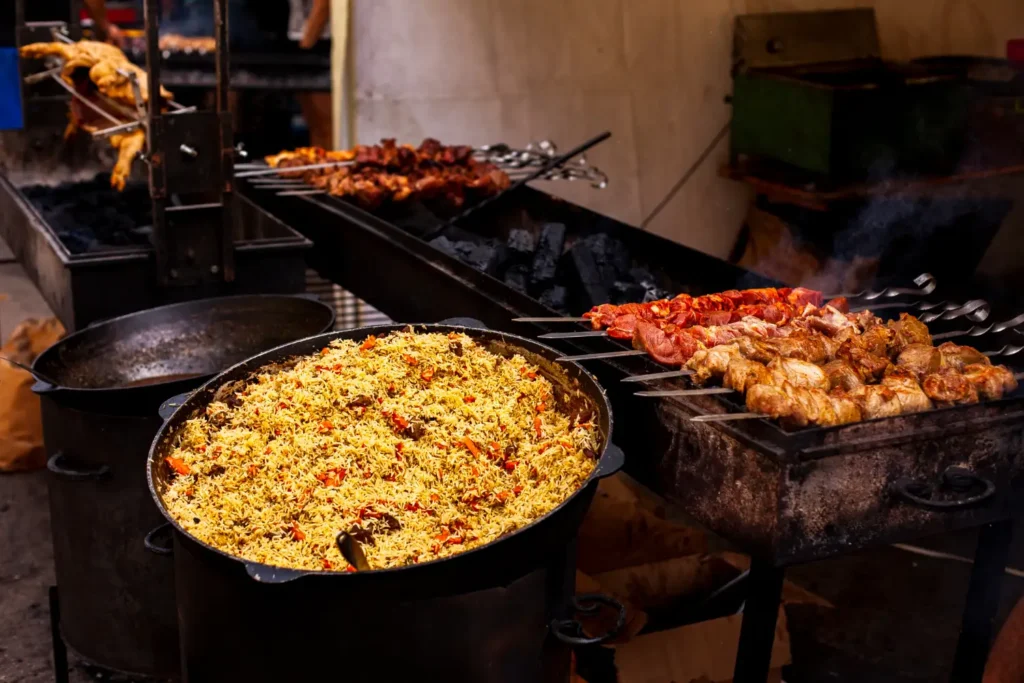Are you wondering what to eat during your safari trip to Tanzania?
Well, you’re about to find out! In this short post, we’ll talk about Tanzanian local cuisine from A to Z and the delicious delights it has to offer.
Fair warning, don’t blame us if you’re irresistibly hungry after reading this blog. All the dishes we are going to cover are delightfully tasty, to say the least.
However, before you dive into individual Tanzanian dishes, you need a brief introduction to Tanzanian cuisine. Let’s start with a brief overview of Tanzania’s culinary traditions and how they have evolved over the centuries.
Tanzanian cuisine is very diverse. The ingredients used and methods of preparation can vary greatly from region to region. The dishes usually include ginger and coconut milk with a pinch of spices such as cinnamon and cloves.
Exploring the Delights of Tanzanian Local Cuisine
Tanzania is a melting pot of several ethnic groups, including immigrants from Europe and Asia. For this reason, all these cultures have influenced Tanzanian cuisine over the centuries.
In a typical modern Tanzanian meal, you will find flavors of Indian and Portuguese cuisine with hints of other European flavors.
Do not be surprised to find a variety of grains and legumes such as corn, millet, beans and pilaf with a good mix of vegetables such as okra, amaranthus, carrots and peas with a good portion of meat or fish. And don’t forget peanuts. Finely ground peanut paste is added to most dishes to give them a rich texture and earthy flavor.
In short (pun intended), Tanzanian food is nutritious, tasty, and healthy, all in one package.

WHAT DO YOU EAT ON A TYPICAL DAY IN TANZANIA?
Let us walk you through an exemplary meal plan of 3 meals a day that is followed by most Tanzanians.
Breakfast
You’ll start your day with a freshly baked portion of chapati (a version of Indian bread) or bread with mandazi (a type of dough made from fried dough). Enjoy it with a steaming cup of hot chai (tea).
Lunch
For lunch, prepare for dishes of various vegetables and meats with a hot portion of rice or ugali (polenta made from cornmeal). Chapatis are also sometimes served with meat or vegetable dishes. Don’t forget to end your meal on a sweet note with the help of traditional Tanzanian desserts such as mandazi (fried sweet bread).
Supper
Dinners are usually variations of the same dishes prepared with different meats or vegetables. You will be able to taste different versions of the food with a unique flavor every time.
Beverages
The humble chai or tea is the non-alcoholic staple drink in Tanzania. If you want a zesty, bold flavor, try the masala tea, which is infused with pepper, clove, and cardamom.
But don’t worry if you’re a coffee lover! Taste the most authentic coffee made from hand-roasted and freshly ground Arabica beans in Tanzania.
If you are looking for alcoholic beverages, we recommend the Mbege beer made from fermented bananas. This is a popular drink of the region that comes from Mount Kilimanjaro. And don’t forget to try Konyagi, a very pure distilled spirit made from sugar cane juice with a unique citrus flavor. You can use it to make your own cocktails or simply enjoy it with lemon and ice cream.
Must-Try Tanzanian Dishes
All said and done; It is impossible to try every dish on the menu when you visit Tanzania. You have more options than you know what to do with it. While you might want to go on a culinary adventure and try new dishes, it’s easy to miss the important ones.
That’s why we’ve decided to help you by listing some of the best Tanzanian dishes that you definitely shouldn’t miss on your safari trip.
UGALI
Ugali is a cornmeal polenta cooked in milk or water and is usually served with a soup or stew of meat, fish, or vegetables. The right way to eat it is to form small balls out of the dough and make a dent in the middle before dipping it into the stew or soup. It’s the perfect combination for hearty soups, stews, and curries.
In 2017, it was added to UNESCO’s list of the Intangible Cultural Heritage of Humanity and is widely regarded as the national dish of Tanzania.

NYAMA CHOMA
Nyama Choma is a specially grilled goat meat, although other meats can also be used. In Swahili, it literally means “grilled meat”. Usually, the pieces of meat, such as the legs or ribs, are roasted over a grill until tender. The finely cooked meat is separated from the bones and seasoned with salt and pepper, then marinated in a mixture of onions, ginger, garlic and lemon juice. This delicious grilled meat is often served with a kachumbari salad and ugali.

PILAU
Pilau is a special dish in which rice is cooked together with vegetables or meat in a rich mixture of different spices such as cloves, cinnamon, cumin, curry and paprika. This dish is heavily influenced by Indian flavors.
Pilau is very popular in the coastal areas, especially in Zanzibar, and is generally served on special occasions such as holidays, festivals and parties.

UROJO SOUP, ALSO KNOWN AS ZANZIBAR MIX
If there’s one dish that perfectly captures Swahili culture, it’s the Urojo soup (Zanzibar mix) – another favorite among tourists and locals and very popular in Stone Town/Zanzibar. It is a popular street food that is rich in flavor and spices. Enjoy every bite – it’s a flour-based sauce cooked with lemon and mango, with additional ingredients such as crispy bhajias, deep-fried mashed potatoes and other spicy chutneys (sauces). Some people add protein in the form of medium-boiled eggs and mishkaki, the East African staple made from grilled mutton or beef. Like many dishes, this one has a hint of Indian flavors. It is best enjoyed as a standalone snack.
ZANZIBAR PIZZA
The Zanzibar pizza is another popular dish that you should not miss in Tanzania. I can tell you; It’s unlike any pizza you’ve ever tasted. The base is made of wheat flour dough, which is cooked in salt and oil like pancakes. The second layer consists of minced meat, garlic, onions and black pepper. Finally, it is topped off with a rich layer of cheese, fresh vegetables, corn and spices. The whole thing is then slowly baked on a grill or tava with ghee until all the layers are properly cooked.
The pizza is usually served with a spicy mango chili sauce.
MCHUZI WA SAMAKI
If you are a fan of seafood, this is the dish for you. Mchuzi Wa Samaki is a fish stew made from fish, such as kambale or migebuka cooked in a rich curry of tomatoes, onions, coconut and carrots. It leaves a spicy aftertaste from the squeeze of lime juice just before serving.
MCHUZI WA KUKU
This is similar to the Mchuzi Wa Samaki, except that it consists of chicken. Pieces of chicken are fried with onions and peas before being cooked in a rich paste of ground coconuts, peanuts, tomatoes and other spices. This dish is usually served with steamed rice or ugali.
MANDAZI
If you want to grab a bite to eat on your travels, Mandazi might be just the snack. It is very popular among Tanzanians. In fact, it is regularly eaten for breakfast with tea and porridge.
It is made by deep-frying a dough made from wheat flour, eggs, milk, and sugar until golden brown and crispy. It comes in a variety of shapes and sizes, and it is sometimes soaked in sweet cardamom-flavored syrup. It can be eaten at any time of the day as a quick snack as it is very effective in controlling hunger pangs.
CHIPSI MAYAI
The name of this dish literally means “chips and eggs” in Swahili and is an all-time favorite food among Tanzanians. It is a combination of an egg omelette mixed with french fries.
Unlike traditional French fries, this version is made from freshly cut potatoes that are fried until crispy golden brown without freezing. You can find it served hot in many restaurants, food stalls, and restaurants.
You can usually enjoy it during breakfast with a hot cup of chai or coffee.

